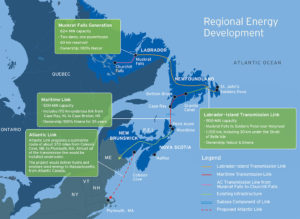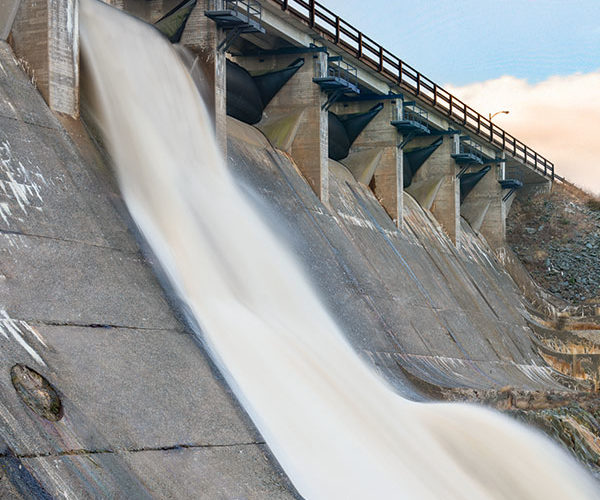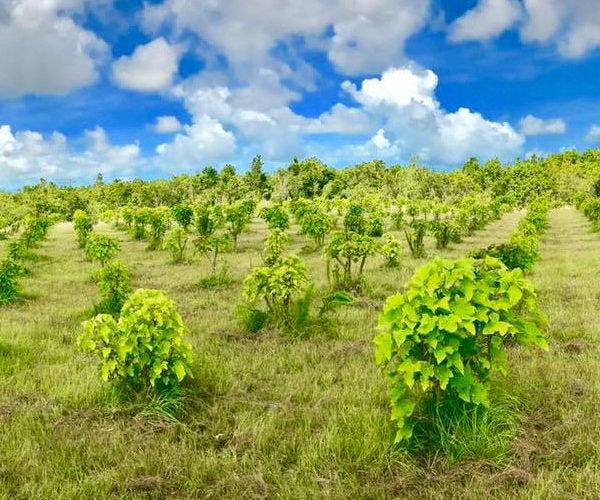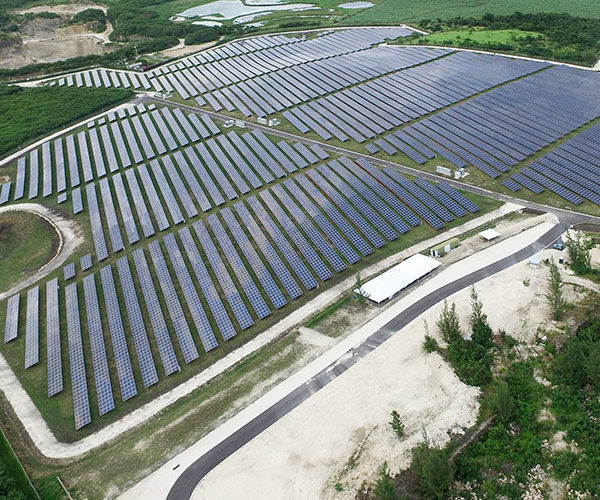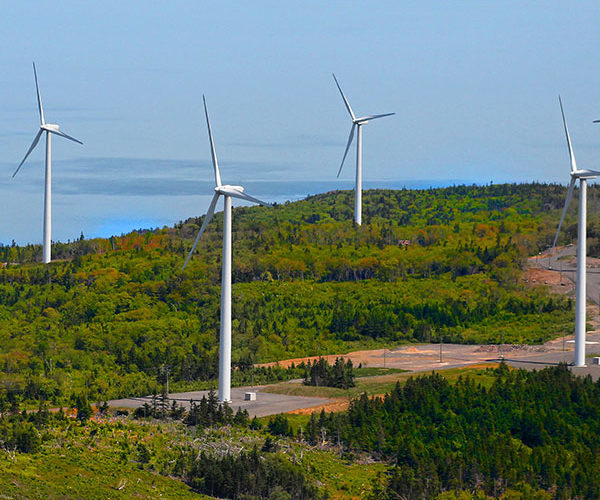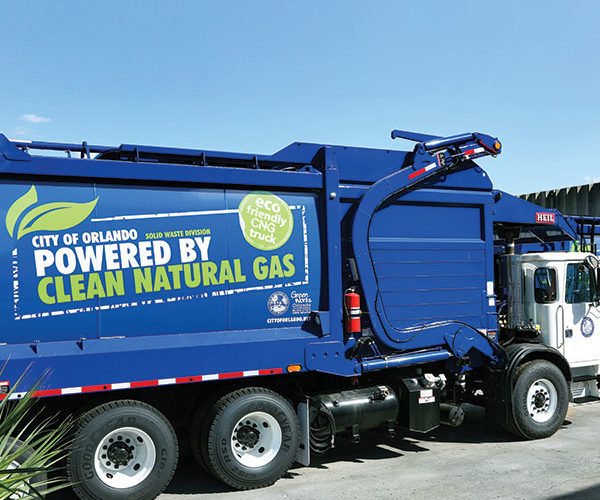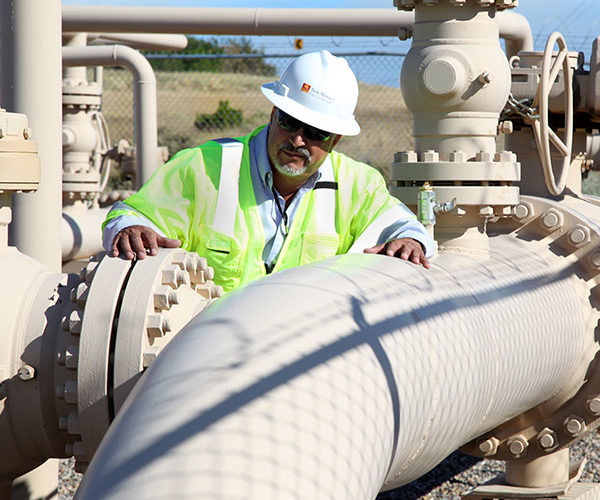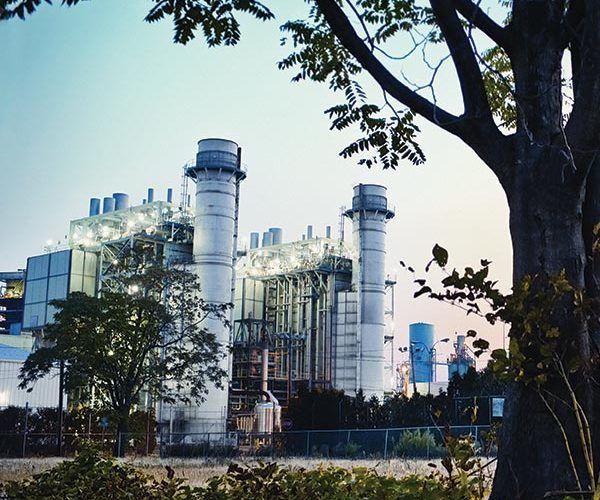Powering Transformation
Emera has a record of powering the transformation of energy to cleaner sources. We are always striving to improve our performance, which includes taking the lessons we learn in one region and applying them in other parts of our business.
Renewables Here
Investing in renewables is one of the pillars of the Emera strategy, and a key way we are making energy cleaner for our customers. We have a diverse renewables portfolio across our companies, including wind, solar, hydro, tidal and biomass generation.
We work hard to match the right renewable energy source with each region. In places like Florida and Barbados, where sunshine is plentiful, we are focused on developing solar investments and looking at ways to integrate electric vehicles as part of the intelligent grid. In places like Nova Scotia and Maine, our focus is on developing access to renewables like wind, hydro and tidal power.
Everywhere we are investing in cleaner energy, we are also investing in partnerships and technologies that we believe will help us overcome some of the challenges posed by renewables, including the intermittency of generation sources like solar and wind. Our energy storage and grid intelligence initiatives go hand-in-hand with growing the amount of renewable energy we can deliver to customers and meet expectations that energy is “always on.”
Our investments in renewable energy took significant leaps forward in the past year, with major solar installations coming online, testing the potential of tidal energy and moving our clean energy transmission projects forward.
Exceeding renewable energy targets in Nova Scotia
The Nova Scotia Power team has led Canadian utilities in carbon reduction by investing in renewable energy. Over the past 10 years, we have tripled renewable energy production in Nova Scotia to 28 per cent and reduced greenhouse gas emissions by over 30 per cent. We are on track to reach a 58 per cent reduction in emissions by 2030. We have made great strides in the past five years with the development of renewable energy projects that contributed to our exceeding the 2015 requirement of 25 per cent renewable electricity, including:
- South Canoe Wind Project (2015), a 78-megawatt wind project, majority- owned by Oxford Frozen Foods, and a 24-megawatt project, majority-owned by Minas Basin Pulp and Paper, both near the settlement of Vaughan, southwest of Windsor.
- Sable Wind Project (2015), a 13.8-megawatt project near Canso, majority- owned by the Municipality of the District of Guysborough.
- Port Hawkesbury Biomass Plant (2013), a 60-megawatt biomass co- generation facility adjacent to the pulp and paper mill in Port Hawkesbury.
100/100 initiative in Barbados
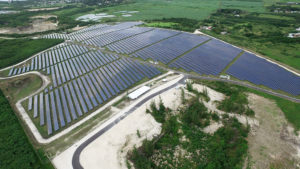
Emera has put forward an ambitious vision for the clean energy future of Barbados. Our team at Barbados Light & Power are leading the 100/100 initiative – a target that will see the Caribbean island nation 100 per cent powered by clean energy and 100 per cent electrified by 2045. In late 2016, the Barbados Fair Trading Commission took a significant step in achieving this goal when they reviewed and modified Barbados Light & Power’s Renewable Energy Rider. The Renewable Energy Rider compensates renewable energy producers who sell their excess electricity to the grid, which is operated and maintained by the utility.
Tracking the sun in Florida
 In Florida, the Tampa Electric team has provided renewable energy options since 2000. The ribbon was cut in March 2017 on the Big Bend Solar installation, the largest of its kind in the Tampa Bay area to date. This 23-MW installation includes more than 200,000 panels that track the sun, with capacity to power nearly 3,300 homes. The array is the largest in the Tampa Bay area and will provide environmental savings of over 27,000 tonnes of carbon dioxide every year–the equivalent of removing up to 6,000 cars from the road. Tampa Electric has a track record of developing solar, including a 2-MW installation at Tampa International Airport and a 1.8-MW array at LEGOLAND Florida.
In Florida, the Tampa Electric team has provided renewable energy options since 2000. The ribbon was cut in March 2017 on the Big Bend Solar installation, the largest of its kind in the Tampa Bay area to date. This 23-MW installation includes more than 200,000 panels that track the sun, with capacity to power nearly 3,300 homes. The array is the largest in the Tampa Bay area and will provide environmental savings of over 27,000 tonnes of carbon dioxide every year–the equivalent of removing up to 6,000 cars from the road. Tampa Electric has a track record of developing solar, including a 2-MW installation at Tampa International Airport and a 1.8-MW array at LEGOLAND Florida.
Solar in Barbados
In 2016, the Barbados Light & Power team flipped the switch at St. Lucy, Emera's first large- scale solar generating facility. The 40,000 panels generate over 20,000 MWh per year from the sun – enough power for approximately 7,700 homes – and offsets 21,000 tonnes of CO2e emissions per year. The amount of electricity generated at St. Lucy displaces 70,000 barrels of oil, which will save enough to pay for the project in only four-and-a-half years.
Breaking records in Nova Scotia
The Nova Scotia Power team continues to make progress in increasing renewable energy, with 28 per cent of the electricity used by Nova Scotians in 2016 coming from renewable resources. This record topped the previous high mark of 26.6 per cent, set in 2015. Nova Scotia’s growth in renewable electricity has been largely through the development of wind power. There are now more than 300 commercial wind turbines generating electricity in Nova Scotia, making the province a national leader in wind energy as a percentage of total generation capacity.
Harnessing tidal energy
Cape Sharp Tidal is a partner- ship between Emera and Open- Hydro to explore the clean- energy potential of the Bay of Fundy, home to the world’s highest tides. In November 2016, the Cape Sharp team successfully deployed and grid-connected the first 2-MW turbine in a pilot. This is an important demonstration project that explored the potential of tidal energy.
Transmission Here
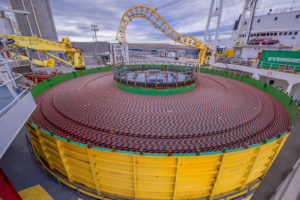
Getting cleaner energy to where our customers need it by investing in transmission is another important component of the Emera strategy, and part of how we build regional energy solutions.
That’s why we are investing in transmission projects like the Maritime Link, which will enable the transmission of clean and reliable hydroelectricity from Newfoundland and Labrador to Nova Scotia and beyond. This transformative project includes building 170 kilometres of subsea HVdc transmission cables under the Cabot Strait, the longest cables of their kind in North America. The project is due to be completed in late 2017.
Linking regions
For customers in Nova Scotia, the Maritime Link will create more energy options and reduce dependency on coal-fired generation. For the residents of Newfoundland and Labrador, the Maritime Link will connect the island of Newfoundland to the North American grid for the first time in history, creating a regional energy loop across eastern Canada. Emera is working on a proposal to expand that regional energy interconnection and meet the renewable energy requirements of New England through the proposed Atlantic Link, a 900-MW subsea cable that would run 563 kilometres from New Brunswick to Plymouth, MA.
Natural Gas Here
We believe natural gas makes sense as a cleaner transition fuel and energy source in some markets, which is why we have invested in natural gas retail companies, marketing and trading, transportation and gas-fired electricity generation in Canada and the U.S.
One major advantage for Emera in completing our merger with TECO Energy in 2016 has been expanding our operations to include natural gas retail companies. Our teams at Peoples Gas and New Mexico Gas have strong records of safely delivering natural gas directly to customers to help power their homes, workplaces and vehicles. For residential and commercial customers, natural gas is an efficient and cleaner way to power things like water heating, appliances, outdoor lighting, furnaces and space heating.
Natural Gas: At home, work and on the road
As the largest natural gas distribution utility in Florida, Peoples Gas’ priority is serving our 372,000 customers across the state. But, we are also focused on innovative ways to grow. We’ve worked closely with local communities to lower the environmental impact of their fleets of refuse vehicles by helping them transition to natural gas. There are currently 45 fueling stations servicing 1,731 natural gas vehicles on our system, and we plan to add two stations in 2017.
Similarly, New Mexico Gas is focusing both on serving our 522,000 customers in New Mexico and exploring opportunities for growth. Here, too, we collaborate locally to encourage the use of cleaner-burning natural gas to fuel transportation. With 16 fueling stations across the state, and an agreement to provide fuel to the UPS Albuquerque facility, we’re making great strides.
Pipeline expertise
Emera companies are also ensuring the safe and reliable transportation of natural gas for industrial partners. Emera New Brunswick’s 145-kilometre Brunswick Pipeline delivers 850,000 dekatherms per day of natural gas from New Brunswick to markets in Canada and the US Northeast. TECO’s SeaCoast Gas Transmission, Florida’s first intrastate pipeline, delivers 100,000 MMBtus of natural gas per day to the Jacksonville area through 40 kilometres of pipeline.
Gas-fired generation
We’re also investing more in gas-fired generation to create electricity, whether through upgrades to the plants in our regulated utilities or the Independent Power Producers owned by Emera Energy. Our energy marketing and trading business owns four gas-fired generation facilities in Canada and New England, drawing on industry and regional knowledge built over more than 15 years of market experience.

In 2016 Emera reduced the percentage of coal used as a fuel source for generation by over half compared to our generation profile in 2005.
Notes: A full breakdown and description of how our energy mix has changed from 2005 to 2016 is available here
Renewables in Nova Scotia: Sissiboo Hydro (top) and South Canoe wind farm (bottom).

In 2016 Emera generated a third more renewable energy compared to our generation profile in 2005.
Notes: Based on absolute GWh of renewable energy generated by Emera in 2005 and 2016 respectively, excluding purchases. Includes 6 months of generation by Tampa Electric since the date of acquisition in 2016.
In 2016, Emera had
12,199
kilometres of electricity transmission lines
63,865
kilometres of electricity distribution lines
In 2016, Emera had:
36,350
kilometres of natural gas mains
1 1,265
kilometres of natural gas service lines
Pipeline expertise.

